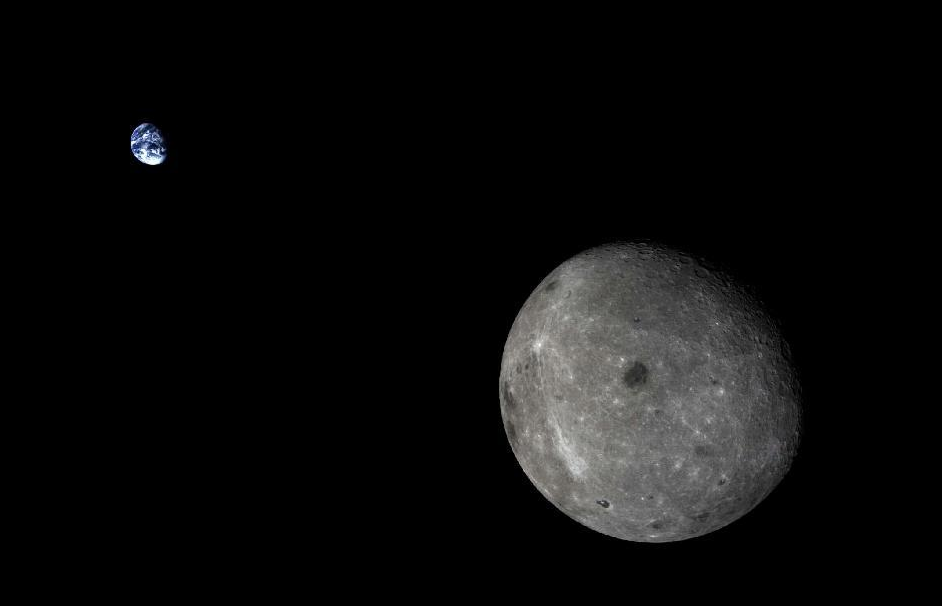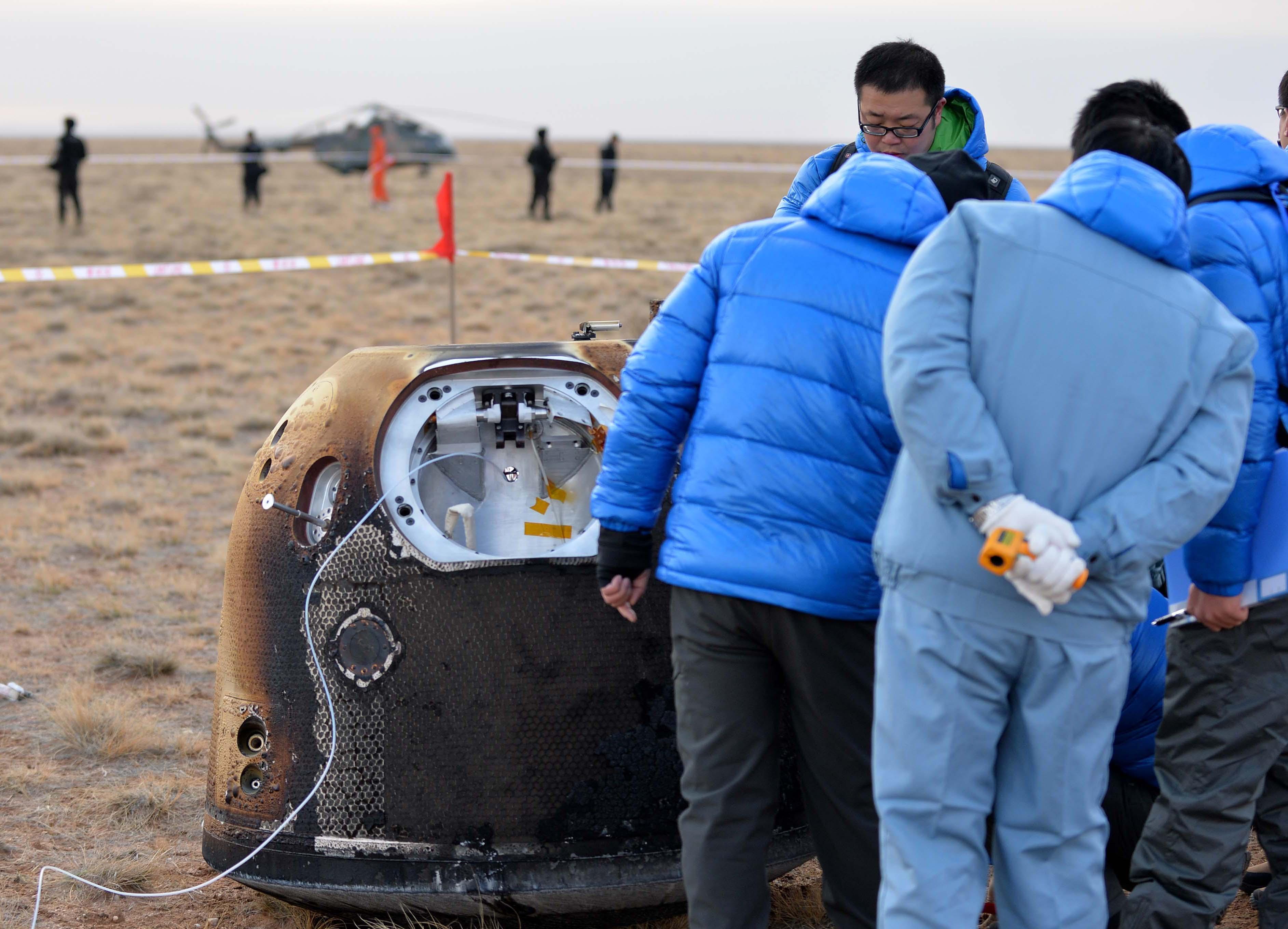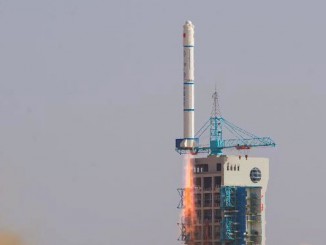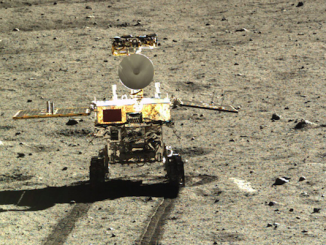
A Chinese spacecraft launched in October has settled into a circular orbit around the moon for rendezvous simulations and reconnaissance ahead of a planned lunar sample return mission, according to state media reports.
The test mission launched Oct. 23 from the Xichang space center in southwestern China, traveled 840,000 kilometers — about 520,000 miles — around the far side of the moon, and deployed a compact landing capsule for a high-speed re-entry into Earth’s atmosphere eight days after liftoff.
The chief purpose of the test flight was to demonstrate technologies and techniques for China’s robotic Chang’e 5 mission set for launch in 2017. Chang’e 5 will land on the moon, collect 2 kilograms — about 4.4 pounds — of subsurface lunar samples, and return the material to Earth.
Traveling at approximately 25,000 mph, the entry vehicle lowered into the atmosphere twice, bouncing back into space and skipping like a rock across water before parachuting to a touchdown in China’s northern region of Inner Mongolia about 300 miles from Beijing. Such skip re-entry maneuvers can diminish the speed and reduce the heat encountered by a spacecraft streaking back to Earth.
The Chang’e 5 sample return mission will employ a similar re-entry profile and landing capsule.
Unofficially called Chang’e 5 T1 — and nicknamed Xiaofei, or “little flyer,” on Chinese social media networks — the demo mission’s mothership diverted away from Earth after releasing the return craft for re-entry.
The pathfinder spacecraft’s main module flew to the Earth-moon L2 point, a gravitationally stable location beyond the far side of the moon, then spiraled into lunar orbit Jan. 11.
The probe first entered an egg-shaped orbit ranging between 200 kilometers and 5,300 kilometers — 124 miles and 3,293 miles — above the moon, according to China’s state-run Xinhua news agency.
Three thruster firings placed the spacecraft in a nearly circular orbit about 120 miles from the moon by Jan. 13, according to a statement posted on the website of SASTIND, a government ministry which oversees China’s scientific and technical projects.

The current phase of the test project is aimed at proving rendezvous techniques required for the Chang’e 5 mission, which will consist of multiple spacecraft to land on the moon, blast off from the lunar surface, transport the soil samples to Earth, and protect the material for a fiery re-entry to a remote landing zone in China.
The sample-carrying launch vehicle will dock with the Chang’e 5 transit craft in lunar orbit before starting the journey back to Earth.
The Chang’e 5 test mission will prepare for the complicated maneuvers by conducting mock rendezvous trials with an imaginary spacecraft in February and March, officials said in a statement on SASTIND’s website.
In April, the spacecraft’s camera will take pictures of the proposed landing zone for the sample return mission. China has not announced where on the moon the Chang’e 5 mission will land.
“After the circular flight stabilizes, the module will travel along the current orbit at an altitude of 200 kilometers above the moon’s surface for tests to validate key technologies for the next lunar probe mission, Chang’e 5,” said Zhao Wenbo, vice director of the lunar probe and space project center at SASTIND, in a report by Xinhua.
Chang’e 5 will mark the third phase of China’s lunar exploration program, after the launch of two orbiter missions in 2007 and 2010 to survey the moon. China sent the Chang’e 3 mission — comprising a stationary lander and mobile rover — to the moon in December 2013, achieving the first soft landing on the moon since 1976.
Chinese engineers developed a lunar lander named Chang’e 4 as a backup to Chang’e 3. Officials said the Chang’e 4 mission will be used to “pave the way for future probes,” but China has not officially disclosed its plans for the backup lander.
Some Western experts have speculated Chang’e 4 could be launched in 2015 or 2016.
Follow Stephen Clark on Twitter: @StephenClark1.



